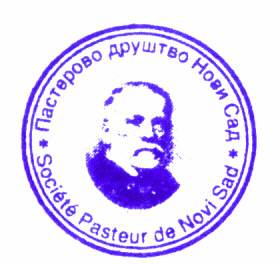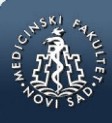md-medicaldata
Main menu:
- Naslovna/Home
- Arhiva/Archive
- Godina 2024, Broj 1
- Godina 2023, Broj 3
- Godina 2023, Broj 1-2
- Godina 2022, Broj 3
- Godina 2022, Broj 1-2
- Godina 2021, Broj 3-4
- Godina 2021, Broj 2
- Godina 2021, Broj 1
- Godina 2020, Broj 4
- Godina 2020, Broj 3
- Godina 2020, Broj 2
- Godina 2020, Broj 1
- Godina 2019, Broj 3
- Godina 2019, Broj 2
- Godina 2019, Broj 1
- Godina 2018, Broj 4
- Godina 2018, Broj 3
- Godina 2018, Broj 2
- Godina 2018, Broj 1
- Godina 2017, Broj 4
- Godina 2017, Broj 3
- Godina 2017, Broj 2
- Godina 2017, Broj 1
- Godina 2016, Broj 4
- Godina 2016, Broj 3
- Godina 2016, Broj 2
- Godina 2016, Broj 1
- Godina 2015, Broj 4
- Godina 2015, Broj 3
- Godina 2015, Broj 2
- Godina 2015, Broj 1
- Godina 2014, Broj 4
- Godina 2014, Broj 3
- Godina 2014, Broj 2
- Godina 2014, Broj 1
- Godina 2013, Broj 4
- Godina 2013, Broj 3
- Godina 2013, Broj 2
- Godina 2013, Broj 1
- Godina 2012, Broj 4
- Godina 2012, Broj 3
- Godina 2012, Broj 2
- Godina 2012, Broj 1
- Godina 2011, Broj 4
- Godina 2011, Broj 3
- Godina 2011, Broj 2
- Godina 2011, Broj 1
- Godina 2010, Broj 4
- Godina 2010, Broj 3
- Godina 2010, Broj 2
- Godina 2010, Broj 1
- Godina 2009, Broj 4
- Godina 2009, Broj 3
- Godina 2009, Broj 2
- Godina 2009, Broj 1
- Supplement
- Galerija/Gallery
- Dešavanja/Events
- Uputstva/Instructions
- Redakcija/Redaction
- Izdavač/Publisher
- Pretplata /Subscriptions
- Saradnja/Cooperation
- Vesti/News
- Kontakt/Contact
 Pasterovo društvo
Pasterovo društvo
- Disclosure of Potential Conflicts of Interest
- WorldMedical Association Declaration of Helsinki Ethical Principles for Medical Research Involving Human Subjects
- Committee on publication Ethics
CIP - Каталогизација у публикацији
Народна библиотека Србије, Београд
61
MD : Medical Data : medicinska revija = medical review / glavni i odgovorni urednik Dušan Lalošević. - Vol. 1, no. 1 (2009)- . - Zemun : Udruženje za kulturu povezivanja Most Art Jugoslavija ; Novi Sad : Pasterovo društvo, 2009- (Beograd : Scripta Internacional). - 30 cm
Dostupno i na: http://www.md-medicaldata.com. - Tri puta godišnje.
ISSN 1821-1585 = MD. Medical Data
COBISS.SR-ID 158558988
ADHERENCE TO ANTI-TUBERCULOSIS TREATMENT AMONG TUBERCULOSIS PATIENTS AT AGARO HOSPITAL AND ITS HEALTH CENTER (Agaro Town, Jimma Zone, Oromia Region, Ethiopia)
PRIDRŽAVANJE ANTITUBERKULOZNOG LEČENJA BOLESNIKA SA TUBERKULOZOM U BOLNICI I ZDRAVSTVENOM CENTRU AGARO (Agaro Town, Jimma Zone, Oromia Region, Ethiopia)
Authors
Asnake Balche, Eliyas Kadi and Ramya Krishna Seelam
Department of Pharmacy, College of Health Sciences, Jimma University, Jimma Ethiopi
• The paper was received on 02.11.2015. Accepted on 26.11.2015.
Abstract
Background: Tuberculosis is an important re-emerging disease with increased morbidity and mortality. Tuberculosis control is hindered by patient non-adherence with treatment regimens. The poor adherence to anti-tuberculosis treatment among patients with tuberculosis is a major problem in Ethiopia. The purpose of this study was, therefore, to assess level of adherence to anti-tuberculosis treatment at Agaro hospital and its health center.
Method: Cross sectional study design was conducted to determine the level of adherence to anti-tuberculosis treatment among tuberculosis patients at Agaro Hospital and its health center, using structured questioner, from February 9 up to 20, 2015. Data was collected, compiled and analyzed to determine the level of adherence
Result: Total of 137 patients included in this study. Among them 68(49.6%) are females and 69(50.4%) are males. Fifty three (38.7%) were in the age group of 25-46 and only 17(12.4%) were on age above 66. Total of interviewed patients, 79(57.6%) were from urban area. The overall proportion of adherent patients was 91.2%. The main reasons for being non- adherent were forgetting to take medication (58.3%), being away from home (33.3%), and failure to go to the health facilities (8.3%) on their right appointment.
Conclusion: The level of adherence (91.2%) observed in this study is relatively high. The main reasons for being non- adherent were forgetting to take medication, being away from home, failure to go to the health facilities on their right appointment. Health education on TB treatment and control must be continued in strengthened manner. Special emphasis should be made with regard to TB patients who are HIV positive to improve adherence to TB treatment by the health care provider of the health center.
References
- WHO, the global plan to stop TB, 2011–2015/Stop TB Partnership. Transforming the fight towards elimination of tuberculosis. Geneva, Switzerland. 2010.
- WHO, Global Tuberculosis report 2012. Geneva, Switzerland, WHO/HTM/TB/2012.6. , 2012.
- WHO, Anti-tuberculosis drug resistance in the world. Report No.4. WHO/ HTM/ TB? 2008. 394. Geneva, Switzerland, 2008(b).
- WHO, Global Tuberculosis Control, Epidemiology, strategy, financing: WHO Report 2009. WHO/HTM/TB/2009.411.Geneva, Switzerland, 2009.
- WHO, The Global Plan to stop TB 2006-2015. World Health Organization, Geneva (WHO/HTM/STB/2006.35), 2006(c).
- Teklu B, Symptoms of pulmonary tuberculosis in consecutive smear-positive cases treated in Ethiopia. Tubercle Lung Dis. 1993; 74:126-28.
- El-Sony AI, Mustafa SA, Khamis AH, Sobhi S, Enarson DA, Baraka OZ, Bjune G, Symptoms in patients attending services for diagnosis of pulmonary tuberculosis in Sudan. Int J Tubercle Lung Dis. 2003; 7:550-55.
- Comstock GW, Epidemiology of Tuberculosis. In Reichmann LB and Hershfield BS (Eds.) Tuberculosis: A Comprehensive International Approach (2nd Ed.) New York, NY: Marcel Dekker, 2000; 129- 56.
- Harries AD, Dye C, Tuberculosis. Ann Trop Med Parasitol. 2006; 100:415-31.
- Grzybowski S, Barnett GD, Styblo K, Contacts of cases of active pulmonary tuberculosis. Bull Int Union Tuberc. 1975; 50:90-106.
- McShane H, Co-infection with HIV and TB: double trouble. Int J STD AIDS. 2005; 16:95-100.
- Datiko DG, Yassin MA, Chekol LT, Kabeto LE, Lindtjørn B, The rate of TB-HIV co-infection depends on the prevalence of HIV infection in a community. BMC Publ Health. 2008; 8:26.
- WHO, Global Tuberculosis Control 2011. WHO/HTM/TB/2011.16,Geneva, 2011
- Federal Ministry of Health (FMoH), Manual for Tuberculosis, Leprosy and TB/HIV Prevention and Control Program. 4th Edition. Addis Ababa, Ethiopia, 2008
- Dooley KE, Lahlou O, Ghali I, Knudsen J, Elmessaoudi D, Cherkaoui I, Aouad RE, Risk factors for tuberculosis treatment failure, default, or relapse and outcomes of retreatment in Morocco. BMC Publ Health. 2011; 11:140.
- WHO, Adherence to Long-term Therapies: Evidence for Action. WHO: Geneva, Switzerland, 2003(a).
- Lienhardt C, Manneh K, Bouchier V, Lahai G, Milligan PJ, McAdamKP.Factors determining the outcome of treatment of adult smear-positive tuberculosis cases in The Gambia. Int J Tubercle Lung Dis. 1998; 2:712-1.
- Maria FP, Ricardo AAX, Norma LS, Wayner VS, Andréa TD , Odimariles MSD, Laura CR. Factors associated with treatment failure, dropout, and death in a cohort of tuberculosis patients in Recife, Pernambuco State, Brazil. Cad. Saúde Pública, Rio de Janeiro, 2007; 23(7): 1573-1582
- Charles PF. National Tuberculosis Center. Adherence to Treatment for Latent Tuberculosis Infection. A Manual for Health Care Providers, 2005
- Volmink J, Garner P. Directly observed therapy for treating tuberculosis. Cochrane Database of System Rev. 2007; 17: CD003343.
- Corbett EL, Marston B, Churchyard GJ, De Cock KM, Tuberculosis in sub- Saharan Africa: opportunities, challenges, and change in the era of antiretroviral treatment. Lancet. 2006; 367:926.
- Madhukar P, Kaustubh G, Rajnish J, Sandeep D, Shriprakash K, Deepak K et al. Mycobacterium tuberculosis Infection in Health Care Workers in Rural India Comparison of a Whole-Blood Interferon γ Assay With Tuberculin Skin Testing. Journal of American medical association. 2005; 293:22
- Mengiste MM, Madeley JR, Tesfay WT, Israel GT, Girma WM, Community knowledge, attitudes and practices on pulmonary tuberculosis and their choice of treatment supervisor in Tigray, northern Ethiopia. Ethiop J Health Dev. 2005; 19:21-27.
- Frederick ADK, Mary T, Seter S and Lenganji S. An assessment of factors contributing to treatment adherence and knowledge of TB transmission among patients on TB treatment. BMC Public Health. 2004; 4:68
- Gopi PG, Muniyandi MV, Chandrasekaran MV, Balasubramanian R, Narayanan PR, Risk factors for non-adherence to directly observed treatment (DOT) in a rural tuberculosis unit, south India. India J Tubercle.2007; 54:66-70.
- Gelmanova IY, Keshavjee S, Golubchikova VT, Berezina VI, Strelis AK, Yanova GV, et al. Barriers to successful tuberculosis treatment in Tomsk, Russian Federation: non-adherence, default and the acquisition of multidrug resistance. Bulletin of the World Health Organization 2007; 85 (9)
- Abebe Kebede and Nasir Tajure Wabe. Medication Adherence and its Determinants Among Patients on Concomitant Tuberculosis and Antiretroviral Therapy in South West Ethiopia. N Am J Med Sci. 2012; 4(2): 67–71.
- Bello I, Itiol A., Drug adherence amongst tuberculosis patients in the University of Ilorin Teaching Hospital Nigeria. Afri J Phar and Pharmacology. 2010; 4:109-14.
- Chirwa T, Nyasulu P, Chirwa E, Ketlogetswe A, Bello G, Dambe I, et al. Levels of Tuberculosis Treatment Adherence among Sputum Smear Positive Pulmonary Tuberculosis Patients Attending Care at Zomba Central Hospital, Southern Malawi, 2007–2008. PLoS ONE. 2013; 8(5): e63050. doi:10.1371/journal.pone.0063050
- Amuha MG, Kutyabami P, Kitutu FE, Odoi-Adome R, Kalyango JN. Non-adherence to anti-TB drugs among TB/HIV co-infected patients in Mbarara Hospital Uganda: Prevalence and associated factors. Africa Health Sciences. 2009: 9; 2
- Davidson H, Schluger NW, Feldman NW, Valentine DP, Telzak EE, Luefer FN. The effects of increasing incentives on adherence to tuberculosis directly observed therapy. Int J Tubercle Lung Dis. 2009; 4:345-4924Naidoo P.
- Malik AS, Ahmad G. Tuberculosis. Professional Med J. 2009;16(1):70-5
- M'imunya JM, Kredo T, Volmink J. Patient education and counselling for promoting adherence to treatment for tuberculosis. Cochrane Database Syst Rev. 2012: 16;5:CD006591. doi: 10.1002/14651858.CD006591.pub2.
- Kassu A, Mengistu G, Ayele B, Diro E, Mekonnen F, Ketema D. Co infection and clinical manifestations of tuberculosis in human immunodeficiency virus-infected and-uninfected adults at a teaching hospital, northwest Ethiopia. J Microbial Immunology Infect. 2007; 40:116-22.
 Medicinski fakultet
Medicinski fakultet